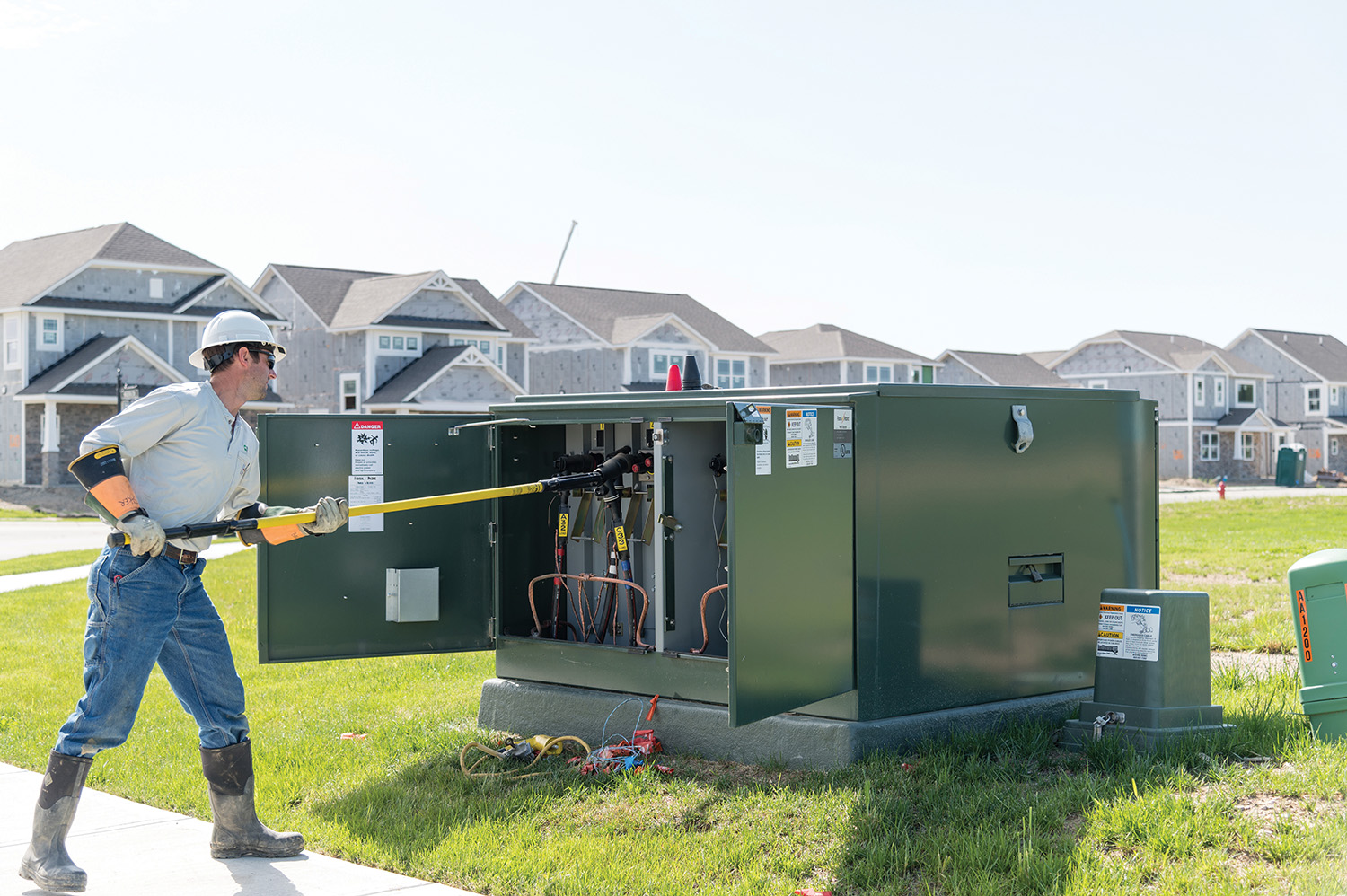
In almost every suburban neighborhood, you can find one of those green boxes that are usually situated near the street between every other house. While they may seem like a well-positioned gathering place for kids, just the right height for sitting, they are no bench for the school bus stop. Nor are they a desk for last-minute homework, a base for a game of kickball in the street, or a launching pad for acrobats tumbling in the grass.
These pad-mounted transformers are part of the electrical system for the buried power lines bringing electricity to each home.
“The pad-mounted transformers are the same as the transformers you see on utility poles. The only difference is they’re mounted on the ground because the wires are underground,” said Tod Brems, operations manager at Marshall County REMC. “They’re designed to be safer, with a locked metal case around the transformer and conduit around the wires, but they’re still an electrical transformer. Just inside each box is 7,200 volts of electricity.”
Transformers lower high voltage from distribution lines to the standard 120/240 household current used to power electronics, appliances and lighting. Overhead systems are easy to see: The straight bare wires mounted tightly to a pole or crossarm are the distribution lines. Wires from the distribution line connect to the transformer, and the lower voltage from the transformer flows along the service line from the pole to each home. Underground, the system is the same, with the encased distribution lines buried, usually along the street or sidewalk, and the service lines usually wired off from the pad-mounted transformer to two homes.
While ground transformers have that outer casing around them, they lack the innate security of distance that pole-top transformers and overhead power lines have. Their safety can be compromised by carelessness or by an accident. “When ground transformers are hit by vehicles or dug under, then they’ve been altered, which could present a potentially unsafe situation,” said Brems.
Consumers should always use caution and keep a safe distance from ground transformers — which is why they are plainly marked with warnings. “Kids may not understand why they shouldn’t be on or near them. We hope parents will show them the warning stickers and tell them about the dangers of electricity,” said Brems. “The electrical equipment inside is designed to be safe, and people don’t have to be scared of it,” Brems said. “But it’s better to avoid the boxes altogether.”



